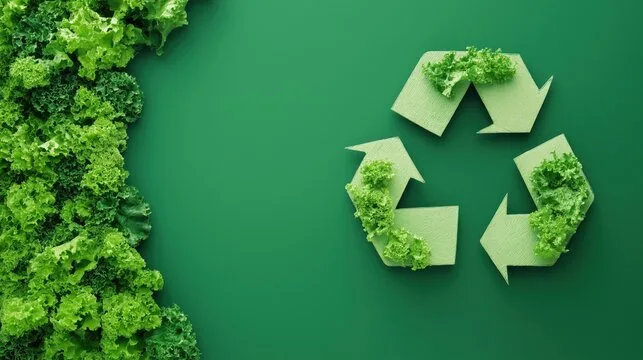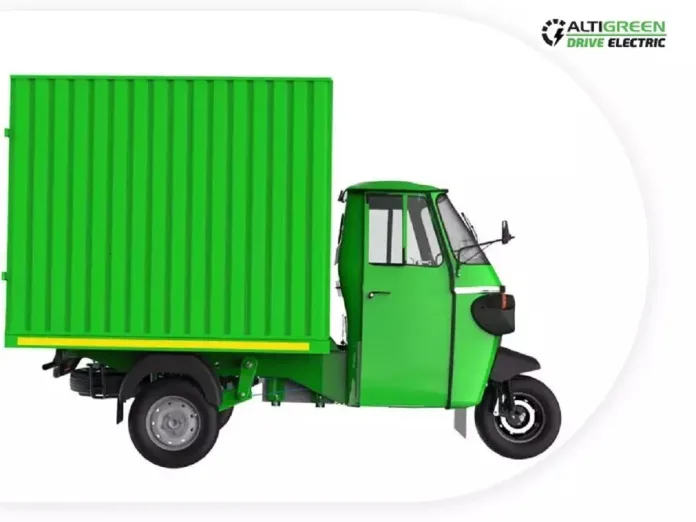Discover how Osmania University’s innovative EV-powered biogas plant is transforming food waste management and promoting sustainability on campus.
Table of Contents
Hyderabad’s Eco-Pioneer: OU’s Groundbreaking Biogas Initiative

In a groundbreaking move that’s sent ripples through the academic world, Osmania University (OU) has taken a giant leap towards sustainability. On April 8, 2025, the university unveiled its latest eco-friendly initiative: an electric three-wheeler vehicle dedicated to transporting food waste from various hostels to the Mahalaxmi Biogas Plant. This innovative project not only addresses waste management issues but also sets a new standard for environmental responsibility in educational institutions.
The Green Machine: OU’s Electric Food Waste Transporter
A sleek, silent electric vehicle gliding through the sprawling OU campus, its mission critical yet unassuming. This isn’t just any vehicle; it’s the university’s newest warrior in the battle against food waste and environmental degradation. The electric three-wheeler, with its zero-emission operation, embodies OU’s commitment to reducing its carbon footprint while tackling the pressing issue of food waste management.
Key Features of OU’s Eco-Initiative:
- Electric three-wheeler for waste transport
- Mahalaxmi Biogas Plant with 2-ton daily capacity
- CSR support from KPMG
- Implementation by SAAHAS NGO and Ahuja Engineering Services
From Plate to Power: The Journey of OU’s Food Waste
The Mahalaxmi Biogas Plant, nestled within the Ladies Hostel premises, is no ordinary facility. With a processing capacity of two tons per day, it’s a testament to OU’s commitment to sustainable practices. But how does it all work? Let’s break down the journey of food waste from plate to power:
- Collection: The electric vehicle makes its rounds, collecting food waste from over 20 hostels daily. This systematic approach ensures that no edible waste goes unutilized.
- Transportation: The collected waste is then transported to the biogas plant site. The use of an electric vehicle for this purpose further reduces the carbon footprint of the entire process.
- Processing: Once at the plant, the food waste undergoes anaerobic digestion, a process where microorganisms break down biodegradable material in the absence of oxygen. This biological process converts the waste into biogas, a mixture primarily composed of methane and carbon dioxide.
- Utilization: The generated biogas is then used as a renewable energy source, replacing a significant portion of wood and LPG used for cooking in the university’s kitchens. This not only reduces reliance on fossil fuels but also provides a sustainable solution to the university’s energy needs.

The Power of Partnerships: KPMG, SAAHAS, and Ahuja Engineering Services
This eco-friendly marvel didn’t materialize overnight. It’s the result of a powerful collaboration between industry leaders and the university. KPMG, a global leader in professional services, provided crucial CSR (Corporate Social Responsibility) support, demonstrating how corporate entities can contribute to educational institutions’ sustainability efforts.
SAAHAS NGO, known for its expertise in waste management, brought its wealth of experience to the project. Their involvement ensures that the biogas plant operates at optimal efficiency, maximizing the conversion of food waste to energy.
Ahuja Engineering Services, with their technical prowess, played a vital role in the design and implementation of the biogas plant. Their expertise ensured that the plant meets all safety and efficiency standards while delivering on its promise of sustainable waste management.
Beyond Waste Management: The Ripple Effects of OU’s Initiative
The benefits of this initiative extend far beyond mere waste management:
- Environmental Impact: By converting food waste to biogas, the plant prevents up to 85 tons of carbon emissions monthly. This significant reduction in greenhouse gas emissions showcases OU’s commitment to combating climate change at a local level.
- Health Benefits: The shift from wood-fired cooking to biogas reduces wood smoke exposure for cooking staff. This improvement in air quality has direct health benefits, potentially reducing respiratory issues associated with prolonged exposure to wood smoke.
- Economic Savings: The biogas plant cuts down on LPG usage and associated costs. With the rising prices of fossil fuels, this initiative provides a buffer against fluctuating energy costs, allowing the university to allocate resources more efficiently.
- Educational Value: The biogas plant serves as a living laboratory for students. It provides hands-on learning opportunities in renewable energy, waste management, and sustainable practices. This real-world application of theoretical concepts enhances the educational experience for students across various disciplines.
A Model for the Future: OU’s Biogas Plant in Numbers
To truly appreciate the impact of this initiative, let’s look at some key metrics:
| Metric | Value |
|---|---|
| Daily Processing Capacity | 2 tons |
| Biogas Generation | 200-240 m³ daily |
| LPG Cylinder Equivalent | 6-8 cylinders/day |
| Carbon Emission Reduction | Up to 85 tons/month |
These numbers paint a picture of significant environmental and economic benefits. The daily biogas generation of 200-240 m³ is equivalent to 6-8 LPG cylinders, representing substantial savings in fossil fuel consumption. The reduction of up to 85 tons of carbon emissions per month is a remarkable achievement, equivalent to taking numerous cars off the road or planting thousands of trees.
The Road Ahead: OU’s Vision for a Sustainable Future

As Professor M Kumar, Vice-Chancellor of Osmania University, handed over the keys of the electric vehicle to the Director of the Centre for Biodiversity and Conservation Studies, it marked more than just a ceremonial gesture. It symbolized OU’s commitment to leading the charge in campus sustainability.
This initiative isn’t just about managing waste or generating biogas. It’s about setting a precedent, showing other institutions that with vision, collaboration, and innovation, we can transform our campuses into models of sustainability. It’s about inspiring the next generation of leaders to think critically about environmental issues and take action.
Looking ahead, OU plans to expand its sustainability efforts. Discussions are underway to implement solar panels across campus buildings, create more green spaces, and introduce sustainability-focused curricula across departments. The university is also exploring partnerships with local communities to extend the benefits of its sustainability initiatives beyond the campus boundaries.
As we look to the future, one thing is clear: Osmania University isn’t just educating the leaders of tomorrow; it’s actively shaping a greener, cleaner world for them to inherit. Through initiatives like the EV-powered biogas plant, OU is not only talking the talk but walking the walk when it comes to environmental stewardship.
In conclusion, Osmania University’s biogas initiative stands as a shining example of what’s possible when institutions commit to sustainability. It’s a call to action for other universities, a source of pride for students and staff, and a beacon of hope for a more sustainable future. As we face the challenges of climate change and environmental degradation, initiatives like these remind us that solutions are within our reach – we just need the vision and determination to implement them.


